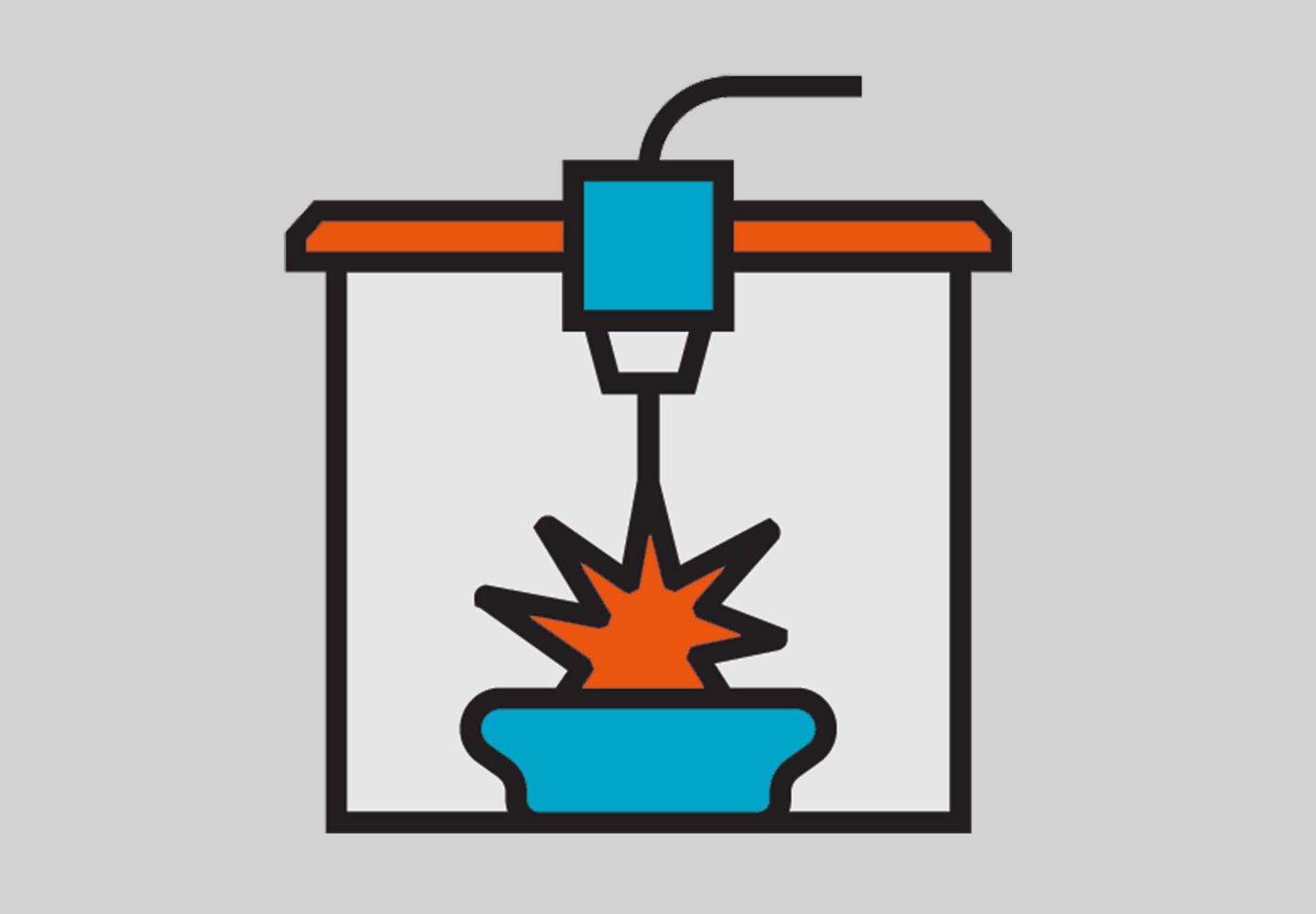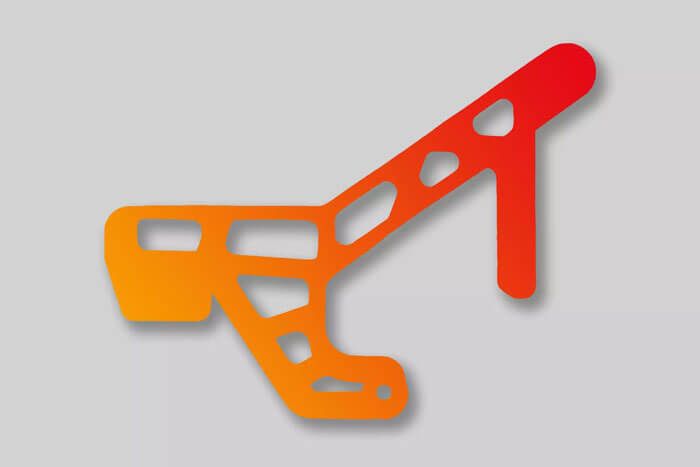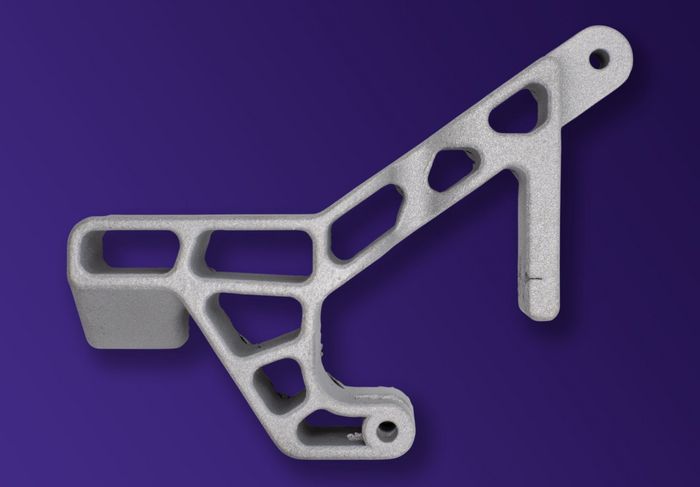Installation space
300 x 300 x 350 mm
Minimum wall thickness: 1 mm
Applications
- Components and small series for mechanical and plant engineering
- Components and small series for the automotive industry
- spare parts
- Design objects and jewellery (made of titanium)
Advantages
- Almost pore-free material
- Lightweight structures are possible
The additive manufacturing process Direct Metal Printing (DMP) works almost identically to SLM. At DMP, metal powder is applied layer by layer and fused with a laser at the defined points. The components, which were divided into these layers in the 3D print file using slicing, are built up step by step in this way.
The additive DMP process works in a similar way to selective laser sintering (SLS), but the metal powder cannot be compacted to the same density during printing. Therefore, support structures are necessary to print overhanging structures. These are removed during finishing, with the part being blasted or sanded to refine the surface. Often the parts are also finished by vibratory grinding to achieve a uniformly smooth surface.
The SLS 3D printing process allows complex structures and geometries as well as filigree shapes to be processed. A great advantage of metal printing is that conventionally manufactured components made of metal can usually be optimised in their shape for additive manufacturing saving weight, costs, and production time.
There is a choice of different metals such as steel, aluminium, the particularly light titanium, the corrosion-resistant tool steel Corrax and Inconel, a nickel-chromium-iron-molybdenum alloy.




